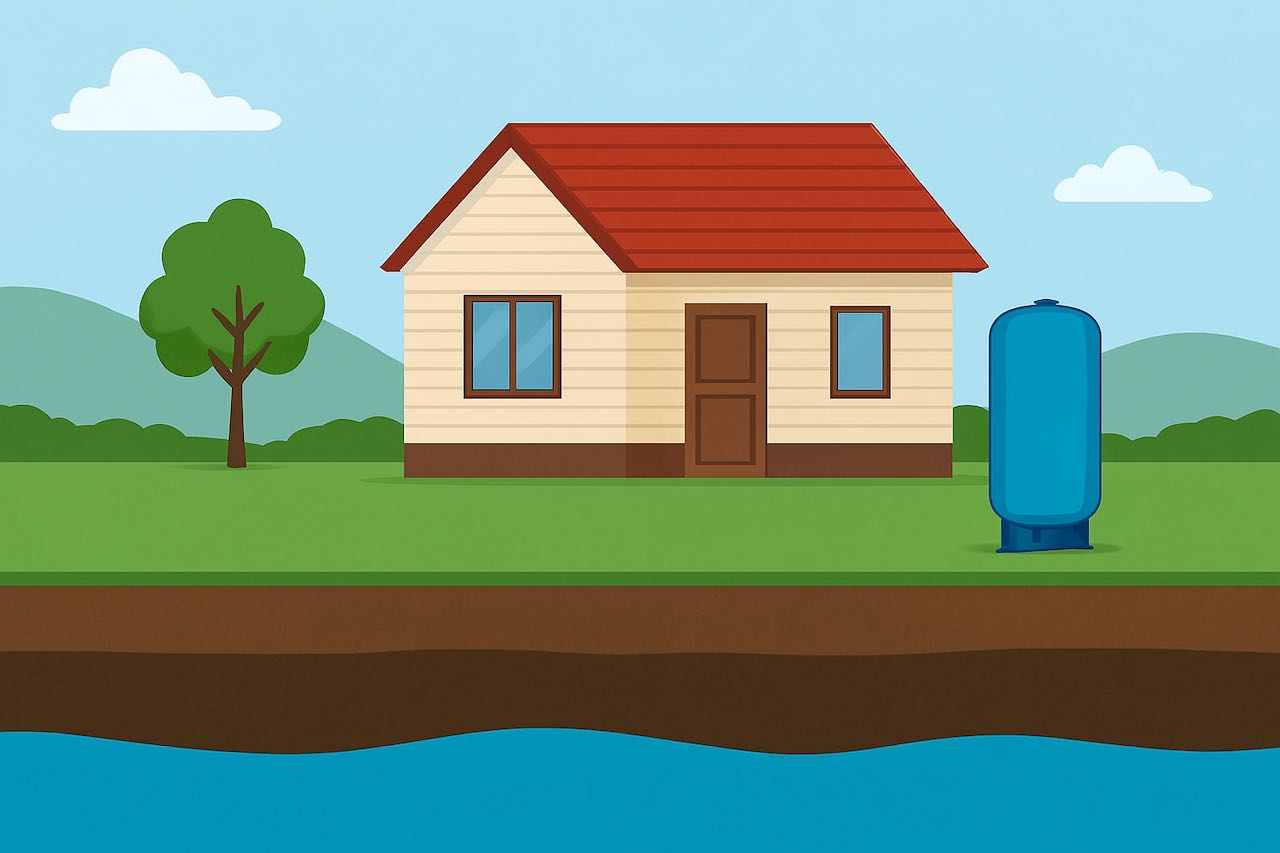How to Add a Shallow Well Pump as a Backup to Your Electric Well Pump

In this article, we will show how we mounted a shallow well pump to a wall near our pressure tank as a backup to our electric well pump. This can be done with both a jet pump as well as a submersible pump. Just make sure the water depth is within the capabilities of the shallow well pump, and that the shallow well pump is capable to pump with pressure into a pressure tank.
Shallow well pumps, typically called suction pumps, can lift water from a maximum depth of 25 feet deep at sea level. This depth is reduced by about 1 foot for every 900-foot increase in altitude from sea level. For example, if you are located at a 4,500-foot altitude you will only be able to lift approximately 20 feet of water.
This limit of 25 feet at sea level includes all of the vertical distance you are lifting the water.
In this article, we are not installing on the wellhead, so we need to account for the elevation difference between where we measured the water level and where the bottom of the suction pump sits. For example, if our wellhead is 5 feet lower than where we are mounting the pump in the basement, we need to account for that extra 5 feet in the total distance that we are lifting the water. If our water level at the wellhead was 13 feet, we are actually lifting the water 18 feet against the 25-foot limit.
Mounting the Well Pump
We mounted the shallow well pump is using a shelf that is mounted to the wall. This provides a secure way of mounting and will take up the least amount of space.
Measure first! Make sure you have enough space around the shelf mount for the length of the hand pump. This makes sure that you have enough room to comfortably pump the handle of the well pump.
We mounted the shelf across two wall studs to make sure the shelf was secure and provided enough resistance to handle the forces generated when pumping the well pump.

The Simple Pump Shallow Well Suction pump that we are using as a backup emergency pump in case we lose power comes with a mounting plate that we attached to the mounting shelf.
Configuring the Plumbing
We set up the plumbing to allow for getting water at the pump head or easily pumping into our pressure tank. Our pressure tank was installed with a spigot right before the input of the water line to the pressure tank. We utilized a short hose to connect the output of the well pump to the pressure tank spigot. By using a hose to connect to the spigot, we are able to direct the hose into a bucket to get water easily at the pump head or direct it to the pressure tank.
We used a plumbing tee to connect the suction pipe and pump to the existing plumbing for our electric pump to our pressure tank. We added ball valves to shut off or redirect the flow of water from the water supply depending on if our electric pump (either a jet pump or submersible pump) was in use or if it was shutoff to enable us to use our hand pump.
You can see in the diagram below a typical manual pump set up as a backup pump to your electric motor.

Pumping into the Pressure Tank
We added a check valve to the manual pump to monitor the pressure levels with a pressure gauge when pumping water into our water tank. Check your pressure tank's recommended pressure levels so that you don't damage your pressure tank when pumping water into it. The output rate of the shallow well pump is about 8.5 ounces per stroke.
To see detailed instructions on wall mounting a Simple Pump check out this instruction manual.







